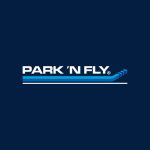Short power naps may help persons working night shifts because they lessen the natural sleep pressure brought on by a circadian low point that takes place between 2 am and 6 am, according to numerous research. Increased attention, memory, productivity, and problem-solving skills are all advantages of this.
Of course, not everyone will benefit from naps, but if you’d want to join the growing trend of people who purposefully nap at work, we’ll make sure you have all the knowledge you need to enjoy the best nap of your life while working the night shift.
What You Need to Know About The Night Shift Power Nap
There are many compelling reasons to sneak in a power sleep in the middle of your shift. For instance, studies have found that night shift workers are 60% more likely than day shift workers to feel tired or even nod off at work.
This is due to the fact that our bodies are designed to react to the steady accumulation of “sleep pressure,” often known as a homeostatic drive to sleep. It is the body’s natural state, which is why night shift employees have to battle so hard not to feel tired between the hours of 2 and 6 in the morning.
For night shift workers who are more likely to experience symptoms of weariness due to these conditions, such as:
- increased occurrences of human error
- injuries and mishaps
- automobile collisions
Unwilling sleep
How are naps meant to help when these can be severe concerns for many night shift workers in safety-critical jobs?
Scientific research has shown that the pressure that builds up before sleep begins to fall quickly. Meaning that, in addition to other advantages, even a little nap can greatly reduce the pressure that night shift workers feel to fall asleep. This essentially ends the excessive drowsiness they experience.
A nap, however, is never a substitute for a restful night’s sleep or good sleeping habits.
The Advantages of Night Shift Napping
Beyond only a boost in alertness and productivity, power naps have a variety of advantages that night shift employees can take advantage of. Here, we’ll briefly go through a couple of those.
Better Memory: Being drowsy might make it difficult to think clearly. According to a 2008 study, power naps improve language recall and knowledge retention. Caffeine, however, has the potential to damage these cognitive abilities.
Blood pressure control: Because a power nap offers your body a time to recover from stress, researchers discovered that it can lower blood pressure.
Mood regulation: The Sleep Foundation states that if you’re having a difficult time at work, taking a little sleep may also help you reset your emotions.
The majority of the evidence supported napping, although there were a few crucial qualifiers:
For night shift workers who already had trouble getting enough sleep outside their duty, power naps made their sleeplessness worse.
The quality of power naps was influenced by the sleeping environment.
The shift’s culture would determine if a napping program would be successful. It was less effective to power sleep if people stigmatized them.
Let’s analyze the factors that can make or ruin a night shift power nap, keeping these in mind.
Time Is Important
Depending on when you nap and how long you sleep, you can benefit from taking a nap while working the night shift.
You run the danger of making it more difficult to fall asleep at night if you sleep too much during your shift. Additionally, if you oversleep during your break, you might find that you wake up feeling even more sleepy than before.
Time for naps
It is preferable to nap proactively during the first part of your shift rather than waiting for exhaustion to catch up with you if you want to incorporate a power nap into your night shift. Even while it may seem counterintuitive to take a nap before you feel tired, there are several reasons why this strategy works best.
First off, taking a power nap isn’t meant to induce deep sleep. You may wake up feeling more groggy than when you went to sleep if you oversleep during a nap.
This can be avoided by taking your power nap before you become too tired. A power nap’s main objective is to lessen the pressure that builds up during sleep. This will occur whenever you take a nap and will finally cause your sleep pressure to peak after you are safely inside your house and in bed.
For this reason, if you take your power nap too late in your shift, you will essentially be pushing the peak of your sleep pressure back too much, which will make you wake up early instead of having the restful night’s sleep you had planned.
As a result, you might want to choose an earlier break in order to get in that power nap before it’s too late, depending on how your break time is set up.
The ideal period for naps is directly in the middle of your wake cycle. If you assume the average person is up for 16 hours each day, researchers at the University of California-Berkeley advise taking naps eight hours after waking up and eight hours before bed.
Nap Size
A power nap is intended to be brief because lengthier naps can frequently lead to the onset of “sleep inertia,” which will make you feel drowsy.
Imagine taking a power nap as if you were floating on a lake to better comprehend sleep inertia. Once you’ve fallen that far, it will take longer to rise to the surface, and you will be drawn into the deeper areas of the sleep lake. The deeper you sink, the deeper you are falling asleep.
Environment Is Important
In crowded, noisy, and/or brilliantly illuminated areas, it is challenging to nap. If you are unable to lie down or, at the at least, recline, it can also be challenging to nap.
If you can find a peaceful setting to snooze in or make one yourself, you’ll benefit most from your power nap.
Nap areas
For their employees, some firms offer nap rooms. In these rooms, which are kept quiet and dimly lit, there are couches, cots, or recliners so workers can rest down during breaks.
Although they may appear to be a high-end amenity exclusive to Silicon Valley, they have really become very common for several more established shift-work industries.
Make a Nap Area in Your Vehicle
No need to worry if your workplace does not provide a nap area; you can make one yourself. Perhaps the best place to accomplish this is in your automobile. The only things you actually need are an eye mask and a blanket, but if you want to create a slumber oasis in your car, here are some of our suggested products.
A car air mattress can be used to turn the back seat of your vehicle into the ideal location to lay down. Instead of utilizing the accompanying blow-up pillows, we advise bringing your own. You can create your own portable sleep room by adding a few warm blankets on top.
Along with these things, we advise downloading a white noise app to your phone, so you can block out noises outside your automobile. For safety concerns, we do not advise using headphones if you decide to take a nap in the automobile.
Anywhere Can Be a Nap Space
You might want to invest in a few of these travel-inspired sleep products if you rely on public transportation to get to work or don’t feel safe napping in your car. These products will let you take a power nap anywhere.
A comfortable neck pillow is essential for taking a power sleep during the night shift at work. It can be used at your desk, on the couch in the break room, or in a chair. But if you must sleep at your desk, we advise spending money on this unique pillow.
A portable blanket: Portable blankets made with campers in mind are excellent for carrying to work. They won’t take up a lot of room in your locker or suitcase.
A blackout eye mask: If ruining your eye makeup is a worry for you, blackout eye masks with a contoured design are comfortable and won’t do it much harm.
What does this entail for workers on the night shift? It implies that there has never been a better time to propose taking naps during breaks.
Your Mental Space Counts
Stress can disrupt your sleep, and power naps are no exception. You’ll probably end up using your scheduled nap time to worry about anything rather than relaxing your body and mind if you carry any stress with you.
The Sleep Foundation offers some advice if you are struggling to put your troubles to rest. Create an intention for your nap: Consider the benefits you want from it.
You can access a ton of free guided relaxation and sleep meditations on your phone through a variety of applications, which can be a terrific complement to your power nap regimen.
Fun Fact About Naps: You don’t have to be sleeping to benefit from a power nap. It has been demonstrated that lying down and closing your eyes for 20 minutes can lower blood pressure and help you manage with stress, which can assist your body handle the demands of working the night shift.






